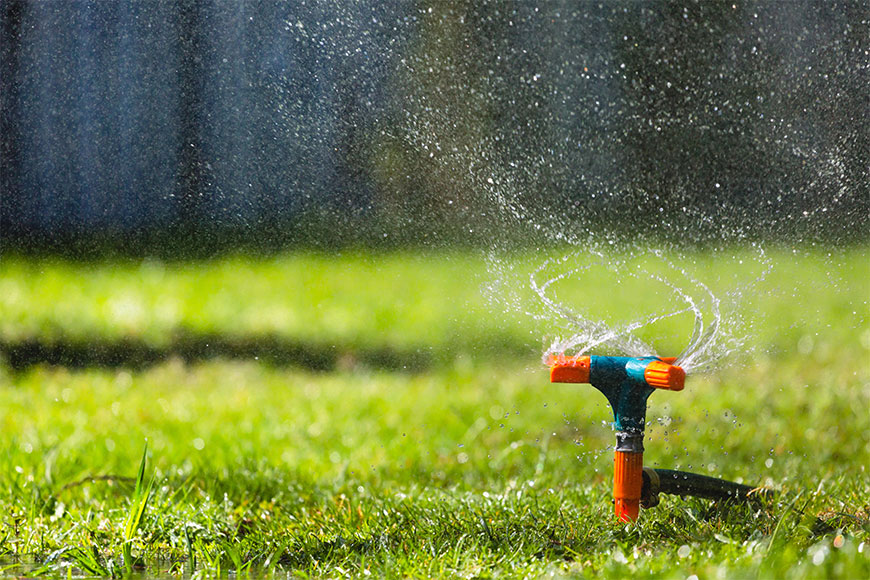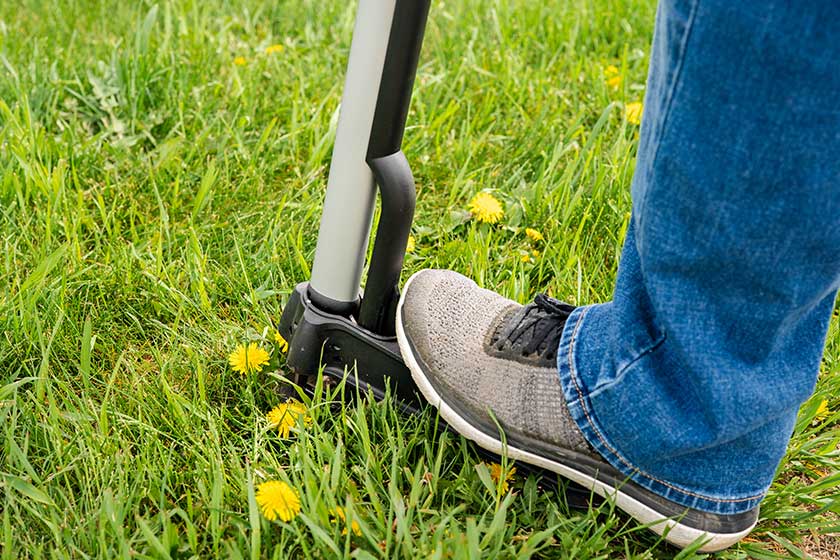Maintaining a healthy lawn during winter may seem unnecessary. However, it’s vital for guaranteeing lush, green grass when spring arrives. While grass growth slows or stops entirely during colder months, your lawn still requires proper care to survive the season and thrive in the spring.
One of the most common questions homeowners ask is about how often to water your lawn in winter. Let’s look into the factors that determine the answer and give actionable tips for effective winter lawn care.
Understanding Lawn Dormancy During Winter
Winter brings colder temperatures. This causes most grass types to enter a dormant phase. In this state, grass growth halts, and its appearance may change, often taking on a brownish hue. While this dormancy might make the lawn look dead, it’s merely resting. Beneath the surface, roots remain active, storing energy for the growing season ahead.
This dormancy reduces the lawn’s water needs significantly. However, it doesn’t eliminate them entirely. Grassroots still need moisture to prevent desiccation, particularly in regions with dry winters or limited snowfall.
Factors Affecting Winter Watering Needs
Several variables influence how often you should water your lawn during winter. Each factor must be considered to make sure your grass remains healthy without wasting water.
The climate in your area plays a significant role in determining winter watering needs. In regions with heavy snowfall, the snow often gives adequate moisture for the lawn.
However, areas with dry, windy winters or infrequent precipitation may require supplemental watering to prevent the soil from drying out.
Different grass species have varying winter watering requirements. Cool-season grasses like Kentucky bluegrass and fescue are more active during cooler months.
Meanwhile, warm-season grasses like Bermuda and St. Augustine go completely dormant. Knowing your grass type helps tailor your watering practices.
Soil composition affects how well it retains moisture. Sandy soils drain quickly and may require more frequent watering, even in winter.
In contrast, clay soils hold water longer and need less frequent irrigation. Loamy soils strike a balance between these extremes and make them ideal for lawn health.
● Temperature and Ground Conditions
Watering is only effective if the ground isn’t frozen. Applying water to frozen soil can create runoff and potentially damage the lawn. Always check the weather forecast and ground conditions before watering.
How Often Should You Water?
In most cases, watering once a month during winter is sufficient. The frequency makes certain that the roots receive adequate moisture without oversaturating the soil. However, the exact schedule may vary based on the factors discussed earlier. Let’s explore some specific scenarios:
If your region experiences minimal snowfall or rain during winter, monthly watering is important. Choose a day when temperatures rise above 40°F and make sure the soil isn’t frozen. Watering deeply allows moisture to reach the roots. This is especially important for maintaining their health.
Lawns in areas with consistent snow cover may not need supplemental watering. Snow acts as a natural insulator and gives moisture as it melts. However, if there are extended periods without snow, consider watering sparingly to prevent dryness.
Newly seeded or sodded lawns require extra attention during their first winter. These young roots are more susceptible to drying out. Watering every two to three weeks, depending on weather conditions, can help establish strong roots and prepare the grass for spring growth.
For Overseeded Lawns
Overseeding with cool-season grass to maintain a green lawn during winter requires more frequent watering. Weekly or biweekly watering makes sure that the overseeded grass remains vibrant and healthy.
Best Practices for Winter Watering
Watering your lawn in winter requires a careful approach to avoid overwatering or causing damage. Here are some tips to keep in mind:
Always water when temperatures are above 40°F and the ground isn’t frozen. Watering in the late morning allows time for the water to soak in before evening temperatures drop.
● Avoid Using Irrigation Systems
Automated irrigation systems are prone to freezing during winter. Instead, use a garden hose or watering can for targeted areas.
● Water Deeply and Infrequently
Rather than frequent shallow watering, focus on deep watering r. Deep watering encourages roots to grow deeper. This makes them more resilient to winter stress.
Check soil moisture regularly by inserting a screwdriver or garden spade into the ground. If it penetrates easily, the soil has enough moisture. If not, it’s time to water.
Adding a layer of mulch around trees and shrubs helps retain soil moisture and gives additional protection against the cold.
The Role of Professional Lawn Care
Maintaining a lawn during winter can be challenging, especially for homeowners unfamiliar with seasonal lawn care practices. Partnering with a professional landscaping service makes sure your lawn receives the attention it needs year-round. Experts can assess your lawn’s specific needs, adjust watering schedules, and give additional services like aeration and fertilization to promote healthy growth.
Covenant Landscapes specializes in tailored lawn care solutions, including winter watering strategies. Our team is committed to delivering exceptional service while prioritizing customer satisfaction, honesty, and integrity.
Watering your lawn in winter might not seem necessary at first glance, but it’s an important part of long-term lawn health. By understanding factors like climate, grass type, and soil conditions, you can determine how often to water your lawn in winter and implement effective practices to keep it thriving.
Contact us today.



